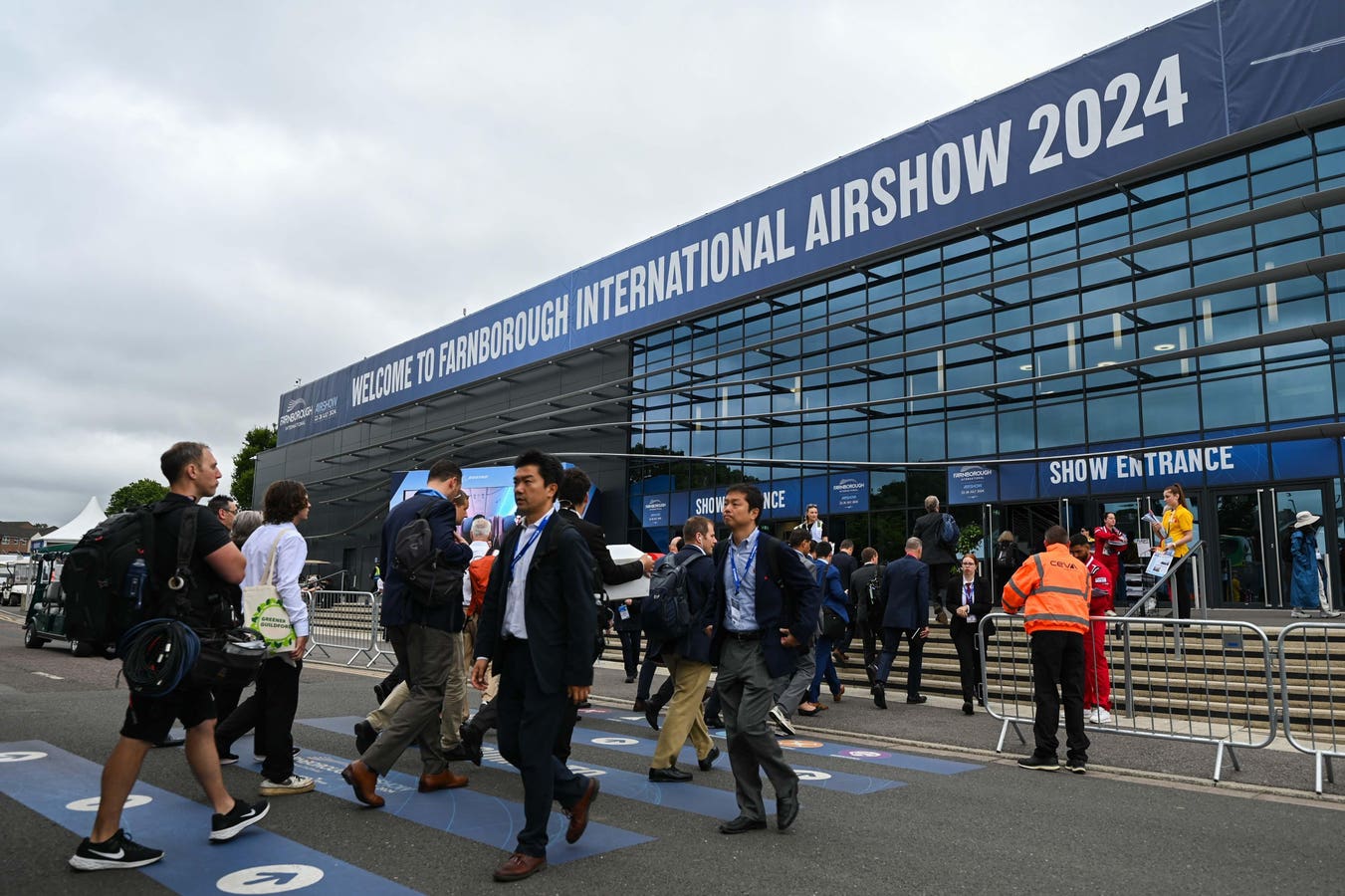The Farnborough International Airshow concluded on Friday not with a bang but a whimper. As expected, the show was subdued (Forbes.com – The Gathering of the Flock, July 16, 2024), but illustrated the divergent outlook for commercial aviation versus defense.
On the commercial side, Boeing’s ongoing production shortfalls have roiled supply chains through the tiers of companies that produce the components and systems that converge for final assembly into a finished aircraft. Multiple surveys and analyses confirmed that Boeing, especially the MAX model, was the overwhelming disruptor to the supply system, although Airbus also faced similar issues. The situation was so acute, that suppliers were openly handicapping the master production schedule of the aircraft OEM’s, once considered sacrosanct, to haircut their own production to avoid excess buildup of inventory.
Boeing did not provide any of their aircraft for static or flying display as is typical. New aircraft orders, which often make headlines during Airshow week but are not a truly valid measure, were also very low. Many of the “announced” orders are transactions that have been accumulated through the year and revealed at the Airshow. But even with this caveat, Farnborough fell far short of the totals from the sister Show in Paris in June, 2023. Airbus had roughly one fifth and Boeing one fourth the number of unit orders this year versus those of Paris last year.
Part of the reason for this disparity was timing – Paris rode the post-pandemic wave of air travel. But also, Paris was before the fallout from the Alaska Airlines door plug incident, which reignited the focus on Boeing’s quality and safety issues.
The truth is that backlogs for narrow body aircraft such as the Airbus 320 series and Boeing MAX series are so long (nine years) that there is no imminent rush for airlines or lessors to queue up for demand a decade away. Illustration of this was wide body orders, which were twice in magnitude in terms of unit numbers or financial values for both OEM’s compared to last year, showcasing the gradual recovery in long range, international travel.
A further harbinger of the relative malaise affecting domestic travel was Ryanair’s earnings announcement on the first day of the Airshow. Second quarter profits for the largest airline in Europe, in terms of number of aircraft or destinations, fell by nearly half compared to the previous three months, sending its shares down by 15%. The culprit was a decline in ticket pricing by an equivalent 15% indicating softness in travel demand. Later in the week, Delta, American and United all reported similar effects.
The reasons for the decline could be many – the end of “revenge travel” after the pandemic or the growing total costs of a trip (including meals, hotel rooms, event admission pricing, surface transportation and so on). But this shortfall is occurring against a backdrop of generally healthy economies. Interestingly, sales of luxury goods are also off, suggesting a slowdown in appetite across economic strata. Altogether, the need for more aircraft to bolster domestic fleets seemed less urgent.
The defense side of the Airshow was quite different. Due to the ongoing war in Ukraine and threat to European nations, and the global rise in tensions with China, Russia, Iran and the middle East, defense budgets are on the rise around the world.
The Global Combat Air Program (GCAP), a sixth generation fighter being developed by a consortium of BAe, Leonardo and Mitsubishi Heavy Industries, unveiled its new delta wing design. The Program, which was formed only 18 months ago, expects to deliver aircraft that are interoperable with other nations’ fighters, such as the Lockheed F-35, by 2035.
The newly elected Prime Minister of the UK, Keir Starmer, attended the Airshow and made remarks that were meant to underscore his support for the GCAP, but were initially read as equivocal, given a pending UK Ministry of Defence review to be held shortly. The kerfuffle underscored the backdrop of politics on the industry that were heightened by the withdrawal of President Biden from the Democratic campaign on the eve of the Airshow. In both cases, the general sentiment was that the shifting political sands would not affect the overall demand for defense programs.
Collaborative Combat Aircraft, or CCA’s, were also a major focus at the Airshow. These unmanned aircraft, which can be controlled by a single manned fighter, can be designed and built much more cheaply than an aircraft that has to support and protect a human operator. They can also undergo maneuvers and take risks that a manned aircraft cannot, and some designs even consider the aircraft to be expendable in combat. However, engines with the appropriate thrust and cost for this new application are not prevalent. As a result, General Electric and Kratos announced a joint venture to develop a small, affordable engine to power such craft.
Overall, the quietness of the gathering gave strength to a notion that has been growing for years. Are these huge shows really necessary? As has been shown on the commercial side, the business of buying new aircraft occurs throughout the year and does not suddenly materialize in a make shift chalet (similar to a double-wide trailer) on an airport tarmac.
And the logistical nightmare of converging a mid-sized city on an airfield several hours away on the periphery of a nation’s capital with limited access routes has long been a complaint of attendees, let alone the cost in terms of time, money and carbon footprint.
Paris and London became the hallmark locations for the global air shows. Paris, held at Le Bourget, was the aerodrome where Lindbergh landed at the conclusion of his historic crossing of the Atlantic. Farnborough, a Royal Air Force base that saw action in the Battle of Britain, was the original site of His Majesty’s Royal Balloon Factory and the first powered aircraft flight in the UK in 1908. In fact, the love of aviation by the Europeans was showcased by the ascent of the balloon carrying the flame at the opening ceremony of the Olympics this past week commemorating the first manned flight (in a hot air balloon) by the Montgolfier brothers on the outskirts of Paris – a 25 minute ascent that was observed by French royalty and Benjamin Franklin.
But despite these historical roots the epicenter of aviation activity has spread to Asia, America and the Middle East. Singapore and Dubai each have air shows which are growing beyond their regional importance, while Europe has two global shows. The US does not have a comparable show, but the International Society of Transport Aircraft Traders conference has grown to such a degree that some call it the “American Air Show.”
Started as a collection of lessors and financiers, it has grown in importance and attracts the senior leadership of the commercial aircraft and engine OEM’s and leasing companies. This is not surprising given that approximately 45% of the commercial aircraft fleet is owned by lessors. However, it does not have an appreciable defense focus.
But the shows are tremendously important for prestige and finance to their host countries and will not end anytime soon. They provide the pulse of the industry and a bit of romance as well.
Read the full article here





